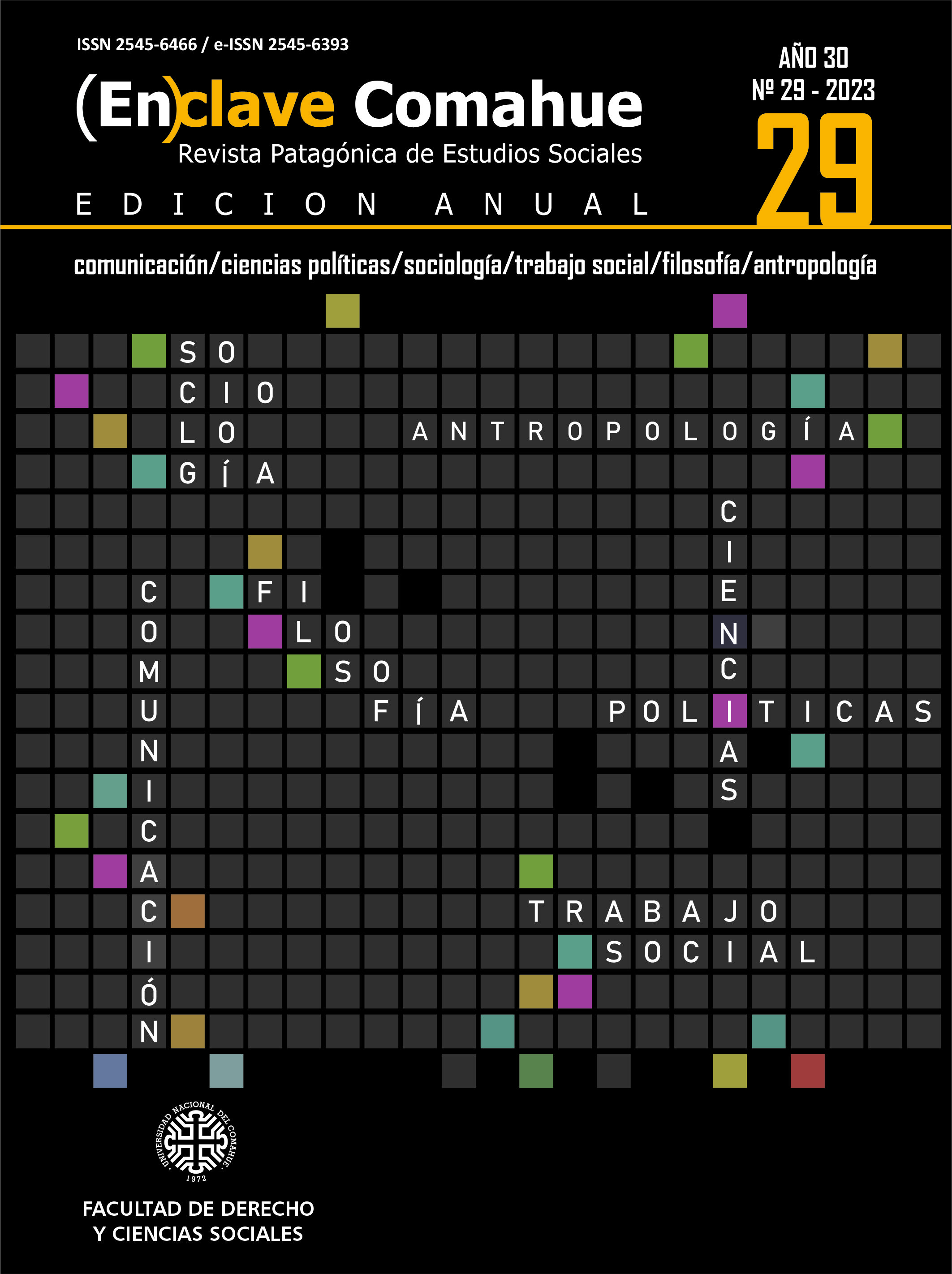Radicalism in Neuquén (Argentina) A province 'frozen' in its political preferences, 1983-2003
Main Article Content
Abstract
The objective of this proposal is to discuss a series of considerations regarding radicalism in Neuquén and the difficulties it faced in becoming an alternative to the Movimiento Popular Neuquino (MPN). It only managed to remain as an opposition in the provincial political system, between 1983 and 2003. The work consists of two parts. The first follows radicalism and its leaders in the area of Neuquén during the democratic transition and the 1990s; it also reflects on the success of the first attempt of a formal agreement – in the context of a regional conflict – between two political forces to challenge the MPN government. The second part analyzes, at a local level, the process of formation and disintegration of La Alianza in 1999, which achieved the greatest representation in the Legislative Power in the reference period. The development of this article interweaves with the main antagonist in the political system, the MPN which triumphed in the reference period, by managing to synthesize national party preferences with a provincial identity. The study links local-national research, personal archive documentation, regional press and key oral testimonies from the chosen period.
Downloads
Article Details

This work is licensed under a Creative Commons Attribution-NonCommercial-ShareAlike 4.0 International License.
Los autores de los artículos publicados conservan los derechos de autor y garantizan a la revista el derecho a ser la primera publicación. Los autores podrán adoptar otros acuerdos de licencia no exclusiva de distribución de la versión de la obra publicada (p. ej.: depositarla en un repositorio institucional o en sus sitios personales) siempre que se indique la publicación inicial en esta revista.
Los artículos se publican bajo la licencia de Creative Commons Reconocimiento-NoComercial-CompartirIgual 4.0 Internacional, mediante la cual se permite copiar, reproducir, distribuir, comunicar públicamente la obra y generar obras derivadas, siempre y cuando se cite y reconozca al autor original. No se permite utilizar la obra ni sus posibles obras derivadas con fines comerciales.
ACLARACIÓN: En números anteriores al año 2017 se utilizó la licencia Creative Commons BY-NC-ND para la publicación de los artículos.
